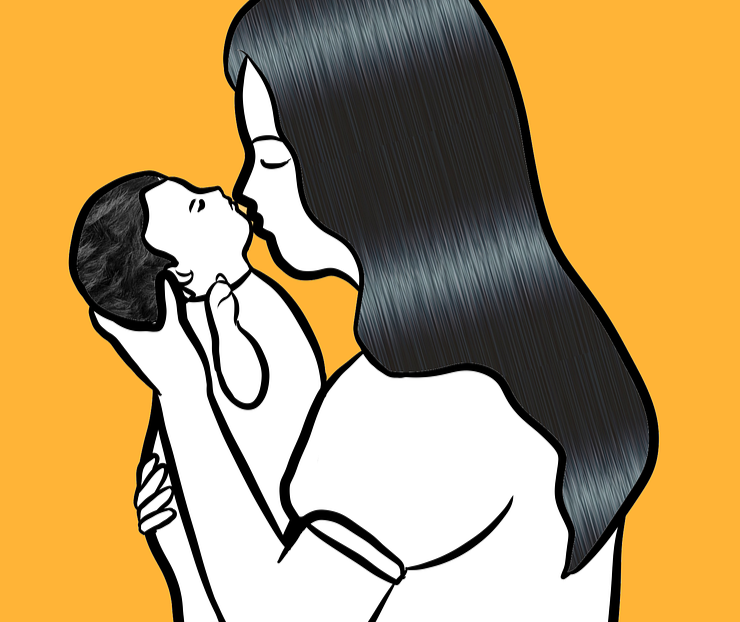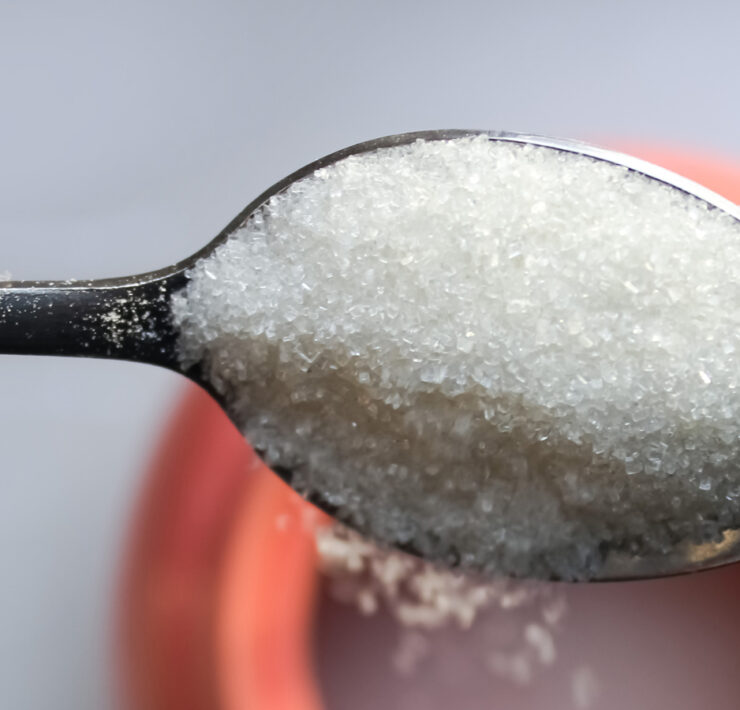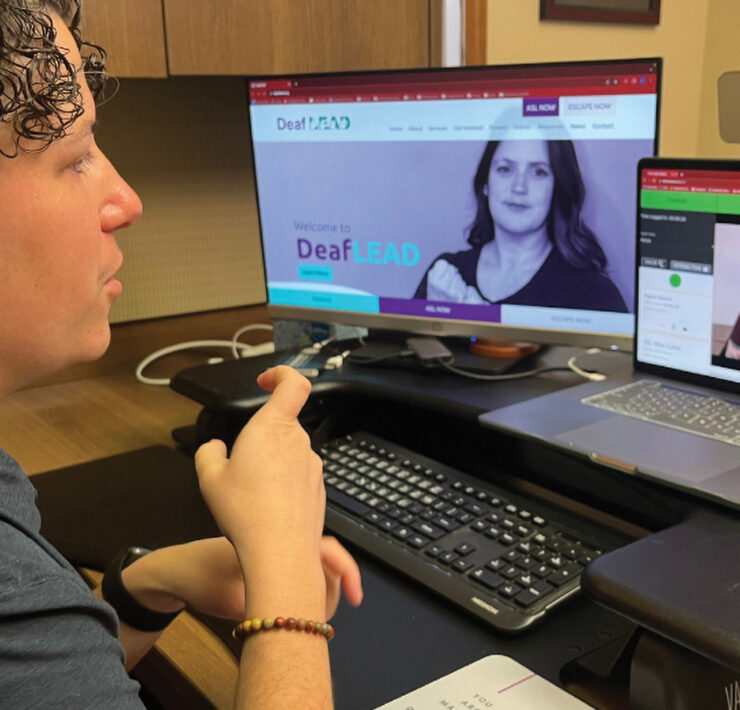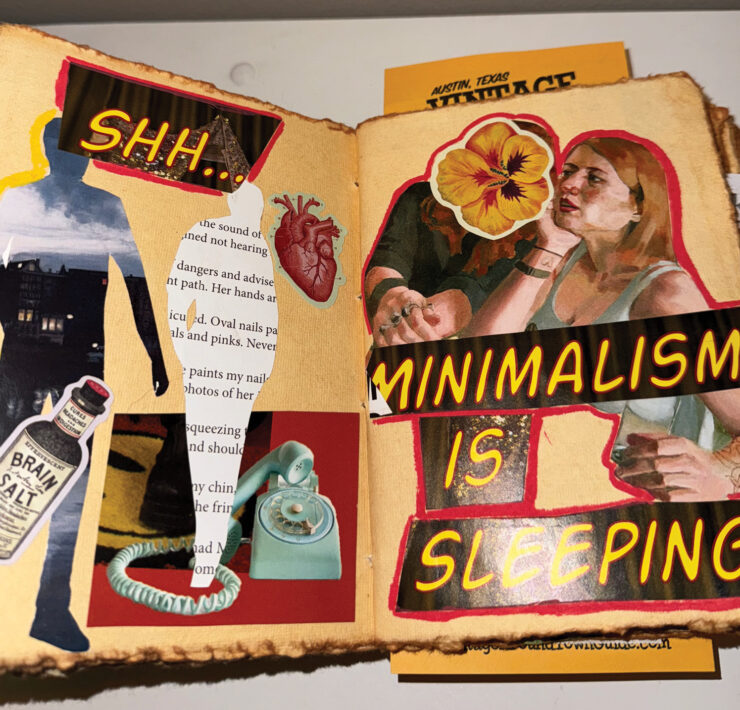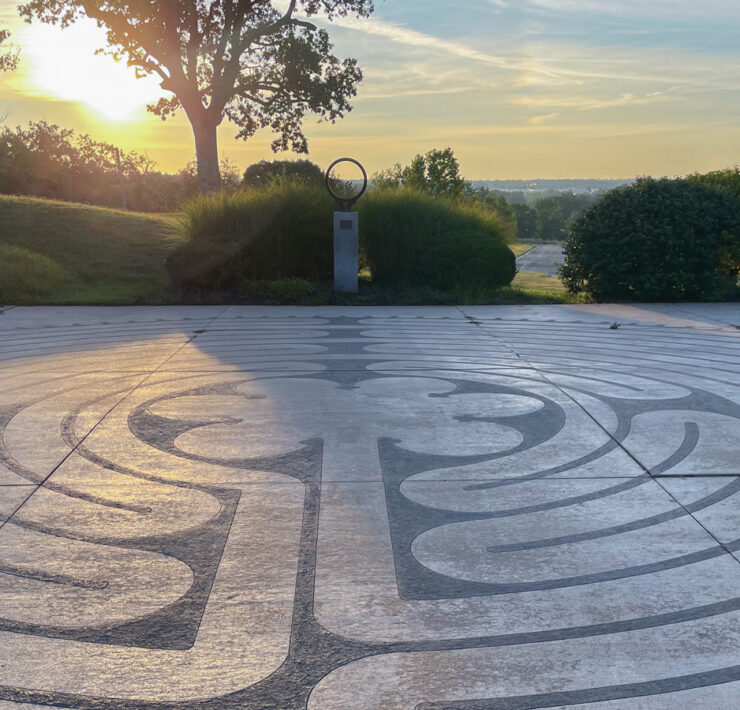This Modern Temperance
- "This Modern Temperance" originally appeared in the January 2025 "Health & Wellness" issue of COMO Magazine.

For the sober curious, there are myriad ways to cut back, define the journey, and even raise a glass.
Could this be the year of the soda water?
While the majority of Americans do enjoy a tipple, a growing number are deciding to give temperance a try. Researchers have dubbed this mass curtailing “the sober-curious movement.”
As with so many social phenomena, the youth are leading the charge. A 2020 study published by the Journal of the American Medical Association found that 28 percent of college students surveyed in 2018 said they didn’t drink alcohol, up from 20 percent in 2002. In a literature review published in The Conversation, researchers from Wilfrid Laurier University in Ontario, Canada, explore the reasons Generation Z isn’t as interested in imbibing. What they found is that Zoomers tend to be more informed on health topics and committed to prioritizing mental health.
Heather Harlan, a health program coordinator at the Columbia/Boone County Department of Public Health and Human Services, says media literacy might also be contributing to the sober curious trend.
“Young people are becoming more savvy,” Harlan says. “They understand how the alcohol industry has targeted them, and they’re getting tired of it.”
The movement also brings with it an element of inclusion. After all, there’s no one reason a person might choose sobriety.
“They may be in recovery,” Harlan says. “It may be for health reasons. There are a lot of medications you shouldn’t take if you’re using alcohol. You may be a caregiver or a parent or there’s someone else you’re responsible for, and drinking would compromise that. There are a lot of reasons you may say, ‘No, thank you.’”
When more people are open to sobriety, it means there’s a seat at the table — whether that table is at a social gathering, in a restaurant, or even at happy hour — for everybody.
“They’re able to have social gatherings where everyone is welcome, everyone is comfortable and safe,” Harlan says. “It’s becoming more important to all of us.”
Your Body and Brain on Booze
It wasn’t that long ago we extolled the virtues of red wine as a heart-health elixir when enjoyed in moderation. The guidance at the time established “moderation” to mean no more than 14 servings of alcohol — a serving meaning 12 ounces of beer, 5 ounces of wine, or 1.5 ounces of liquor — over the course of a week, with no more than four servings in one sitting. For women, it was seven servings a week with no more than three in one sitting.
“There’s definitely been a big shift in the way we think about alcohol use,” says Dr. Lucas Buffaloe, a family medicine physician at University of Missouri Health Care.
These days, doctors are telling their patients that the healthiest amount of alcohol is no alcohol. Buffaloe says even moderate consumption is linked to various types of cancer, heart and liver diseases, mental health issues, and dementia later in life. And according to the Centers for Disease Control and Prevention, more people are dying from alcohol-related causes such as alcohol poisoning and conditions attributable to excessive alcohol consumption over time. From 2020 to 2021 there were 178,000 such deaths, up 29 percent from 2016 to 2017. If you break it down, that’s about twenty deaths every hour.
So what happened to red wine as a part of a heart-healthy lifestyle?
“The perceived health benefits came from some studies that are now felt to be outdated,” Buffaloe says. “It turns out it wasn’t so much the alcohol use that was healthy, it was some of the other healthy habits that people who drank in moderation have.”
But here’s the thing: Alcohol plays with our brains in a way that can make moderation difficult. As a central nervous system depressant, alcohol inhibits brain activity and slows everything down. Buffaloe says that’s why some people experience a sedative effect. But alcohol also triggers the release of the body’s natural opioids, which gives the sensation of pleasure.
“One of the tricky things about that is because we experience pleasure when we drink alcohol, it can lead us to think more alcohol will produce even more pleasure,” Buffaloe says. “That may lead people to have two or three drinks when maybe one would suffice.”
But more people are catching on that heavier drinking isn’t actually doing them any favors. Buffaloe says he’s noticed an uptick in the number of patients who want to cut back.
“People are interested in changing habits as the new year begins, but part is a replication of this overall trend toward reducing drinking,” Buffaloe says.
The Real Good Times Start Now
Stereotypes about alcoholism can make it easy to overlook signs there might be trouble. For Cassi Cody, 52, the image of someone else — it would never be her — holed up alone and binge drinking offered some plausible deniability.
“I drank socially, and there’s less stigma associated with social drinking,” says Cody, a business development representative. “I would just call myself a social drinker. Well, if you socially drink until you’re blackout drunk, that’s a problem.”
The problem with social drinking, though, is that Cody is a social person.
“So much in Columbia is based around going out to eat or having a cheap Chardonnay at a mixer or stuff like that,” Cody says. “It was so easy to go to a little networking thing and have some Chardonnay and then go somewhere else and have a little more.”
But once the good times — or at least they felt like good times — got rolling, Cody had a hard time slowing down. Then, on the Saturday before Thanksgiving 2022, Cody came home from a night out, slipped in the bathroom, and hit her head on the sink faucet — resulting in a big gash.
“I had to wake up my husband. Or maybe he woke up. I don’t know because I was so drunk I don’t really remember,” Cody recalls. “Of course, with all that comes terrible shame. Every time I drank, I had shame and post-alcohol depression. This time it was compounded. There was the shame of being blackout drunk, and the shame of scaring my husband and son, who was 18 at the time.”
Cody spent the next several days in bed, too ashamed to even look at herself in the mirror. When she finally emerged on Thanksgiving day, she was resolved: She was done drinking.
Her husband and son were supportive. So, too, were her close family and friends.
“They completely supported me. This wasn’t just a ‘me’ issue, it was something that affected all of us,” Cody says. “More than anything they loved me, and they didn’t blame me for what happened. They didn’t blame me for the fall, they didn’t make me feel bad. They knew I felt bad. They knew I was punishing myself enough. They love me, and I needed to give that love back to them. I needed to show them that I loved them enough to get sober. Getting sober was important for me, but they were my reason.”
But while she was able to find comfort and support from her nearest and dearest, walking away from alcohol meant walking away from some places and people.
“One was a group of friends,” Cody says. “Their lifestyle really revolved around drinking, and I couldn’t be around that.”
But the longer she worked on her sobriety, the easier it became — not just the stick-to-itiveness but the ability to sit with thoughts and live every moment fully.
“Since I’ve become sober, I’ve just become an emotionally stronger person,” Cody says. “Things before that I used alcohol to cope with, well, now I have to process those feelings. I have to work through it, I have to experience it. It gives me strength, and I just keep getting stronger.”
Today she’s not triggered by other people drinking. If you were to join her for dinner and order a beer or a glass of wine, it won’t bother her. But what she’s found is that there’s a lot to love about being a homebody.
“I’d rather order Jina Yoo’s and bring it home and sit in my PJs and eat sushi than anything else,” Cody concedes. “We have what we call a lounge out in our garage, and we sit out there with the garage door open because it looks out at all these trees, and I drink my kava hot tea. I talk to my guys, or sometimes we watch something on the TV or sometimes we sit together and ignore one another and play on our phones. That’s my life now, and I love it.”
A quick but important caveat on quitting cold turkey: Buffaloe says it’s safe for most people to stop drinking, but people who drink more than one or two drinks every day might be at risk for alcohol withdrawal. For these folks, withdrawal can set in within a matter of hours. Symptoms can include anxiety, rapid heart rate, sweating, nausea, and tremors. In severe cases it can cause delirium and seizures, making it a potentially life-threatening medical problem. Buffaloe says there are treatments that can prevent a person from experiencing these symptoms, and he encourages those with a history of heavy drinking to consult their primary care providers about the best way forward.
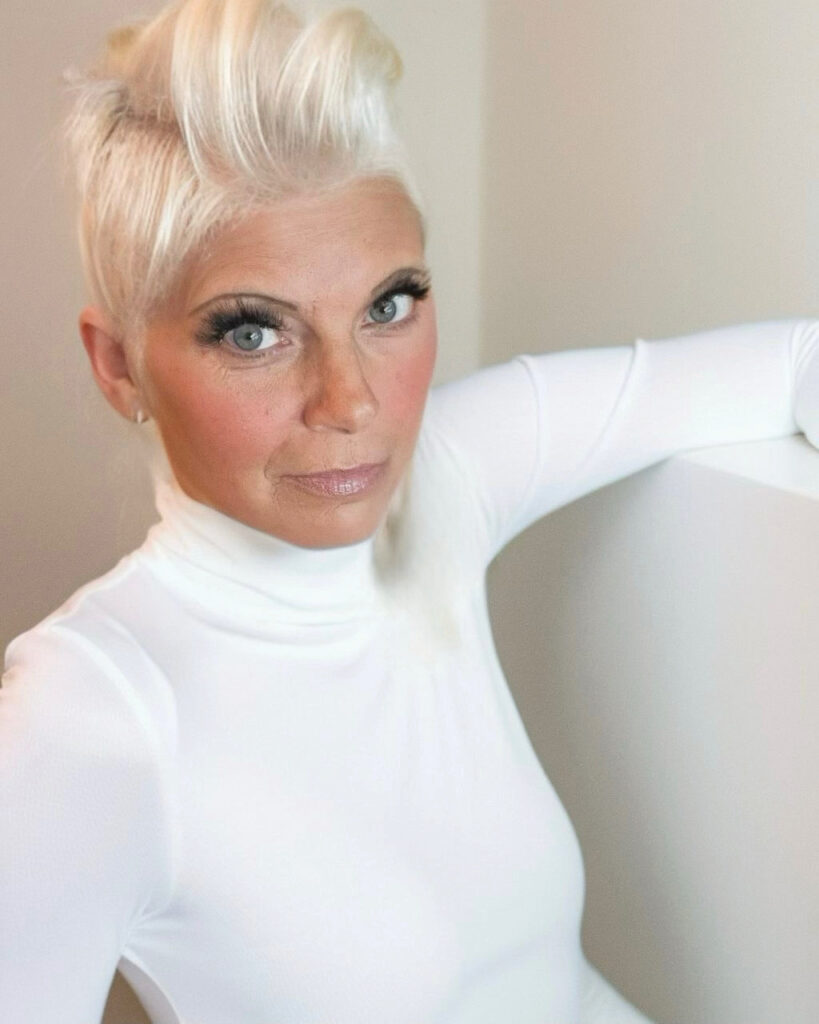
“They knew I felt bad. They knew I was punishing myself enough. They love me, and I needed to give that love back to them. I needed to show them that I loved them enough to get sober. Getting sober was important for me, but they were my reason.”
Cassi Cody
Ways to Get Sober
When Buffaloe speaks with patients who are interested in quitting, he asks them to consider a few things.
“First, consider why you’re drinking,” Buffaloe says. “Are there alternatives to alcohol that would be just as satisfying to you? Second, consider how much you need to drink to achieve your desired result. Maybe one drink is good enough. Think about the effect alcohol has on you — good or bad. Most of us will use it to relax or enjoy a social situation, but we might also experience fatigue or maybe feel less connected or engaged when we drink alcohol. My goal with those discussions is for people to rethink their behavior and drink in a way that’s healthier for them.”
Buffaloe notes that for some, medications like naltrexone and acamprosate can help with cravings. And for many, support groups are a fantastic source of encouragement and accountability.
Twelve-step programs like Alcoholics Anonymous use peer support to help people work through their challenges. A substantial strength of AA is its ubiquity, which helps with access issues.
“Columbia has a very robust network of AA meetings,” Buffaloe says. “They’re available every day of the week, multiple times a day.”
But AA isn’t the right fit for everybody. Harlan points out that it’s sometimes hard to live up to the all-or-nothing emphasis on counting consecutive days.
“I’ve known people in AA who would lie about whether they used because they would lose their status if they couldn’t say, ‘I’ve had 142 days sober.’” Harlan says. “If they say, ‘I drank last week,’ they have to start over.”
And, Harlan says, people who are doing the work of cutting back deserve some grace.
“People don’t get high blood sugar or high blood pressure under control on their first try,” Harlan says.
Other programs offer a contemplative approach. Annie Grace’s This Naked Mind program uses psychology — notably cognitive behavioral therapy, or CBT, a modality that helps people challenge harmful patterns through positive thought processes — and neuroscience research to teach people new ways to think about cravings and triggers. Grace’s book The Thirty Day Experiment calls on readers to abstain from alcohol for 30 days, during which they get a day-by-day breakdown on what’s happening to their body as it recovers.
(A quick note about month-long challenges like Dry January and Sober October, during which participants avoid alcohol for the duration of a calendar month. Buffaloe likens them to crash dieting.
“You’ll see benefits while sticking to it, but most people go back to the behaviors they were participating in before they started it. Alcohol use is like any other behavior. You want to think about how you’re going to do this long-term,” Buffaloe says.)
Another popular book in sobriety circles is Quit Like a Woman, a feminist perspective on sobriety written by Holly Whitaker, who also founded a moderated online support group for women and nonbinary people called Tempest. Tempest later merged with Monument, an addiction-treatment telehealth company that offers virtual counseling, prescriptions for medications to help with cravings, and moderated online support groups.
Locally, a number of private practice therapists offer addiction counseling. Buffaloe lists Phoenix Programs, Burrell Behavioral Health, and Compass Health as additional options.
And if you don’t necessarily need that much intervention, there’s no shortage of sobriety apps. Cody likes the Nomo Sobriety Clock, which tracks days of sobriety as well as stats like money saved, calories burned, and time not wasted. There also are community features that allow users to find accountability partners and check in with one another. While Cody has never been an especially active chatter in the app, she does enjoy sharing her wins.
“It has felt good to go in there and say, ‘I’m at this point in my sobriety.’ Life is so much better, it’s so much clearer. Wonderful things happen on the sober side,” Cody says.

“Think about the effect alcohol has on you — good or bad. Most of us will use it to relax or enjoy a social situation, but we might also experience fatigue or maybe feel less connected or engaged when we drink alcohol. My goal with those discussions is for people to rethink their behavior and drink in a way that’s healthier for them.”
Dr. Lucas Buffaloe, MD
Ways to Be Sober
We used to understand the term “sober” as meaning completely abstaining from intoxicating substances. But these days, there’s more than one way to be sober.
“People whose use of alcohol and other drugs has caused problems can use sober curious as a way to actively take stock,” Harlan says. “It’s an opportunity to understand an impulsive moment and how using again might result in a return to the problems that had occurred before when sobriety was not on their radar. Ultimately, people will choose their own lifestyle; the rest of us can more actively work to support and not undermine healthier choices.”
Sober curious refers to a period in time in which a person explores moderation or abstains entirely. It can be temporary or permanent. Harlan says sober-curious periods are the perfect opportunity to focus on reflection.
“Pay attention to ‘How do I feel?’ ‘How much more money do I have in my pocket?’ ‘How nice it is to wake up after an evening with friends and I don’t feel awful,’” Harlan says. “I like to feel good. What helps you feel good?”
Intermittent sobriety is a term used to describe scheduled moderation. As with intermittent fasting, a person practicing intermittent sobriety schedules when and how much they will drink. (As someone who is intermittently serious about her running, I find this model helps me stay strong without succumbing to all-work-no-play pressures.)
“I think of it the same way we might think about other things we might enjoy, like sugar. Who doesn’t like sugar?” Harlan says. “But we know it needs to be an occasional treat, not a rich dessert every night.”
And then there’s California sober. This controversial approach to sobriety entails forgoing alcohol and/or hard drugs in favor of cannabis. There’s a mind-altering substance in play, which means some activities — think: driving — are dangerous. However, some find this approach makes it easier to avoid alcohol.

They may be in recovery. It may be for health reasons. There are a lot of medications you shouldn’t take if you’re using alcohol. You may be a caregiver or a parent or there’s someone else you’re responsible for, and drinking would compromise that. There are a lot of reasons you may say, ‘No, thank you.’
Heather Harlan
This Calls for Something Special
Just because someone isn’t drinking alcohol doesn’t mean they’re not drinking something delicious. According to the IWSR, a global drinks data and insight provider that used to be known as the International Wine and Spirits Record but has since changed its name to IWSR to indicate expertise in beer and — wouldn’t you know it? — no- and low-alcohol beverages, U.S. sales volumes for nonalcoholic beverages were up 29 percent in 2023 compared with 2022’s numbers.
So What’s Good?
There’s Seedlip, a botanical-based non-alcoholic spirits brand from the UK. You can find it locally at Schnucks or Macadoodles. Las Margaritas has an entire menu of nonalcoholic cocktails using Seedlip.
There also are a number of brands like Ritual, Cut Above, and Free Spirits, which make non-alcoholic versions of gin, tequila, whiskey, rum, and other bar cart staples. You can try them at restaurants like Lee Street Deli, Flat Branch Pub & Brewing, CC’s City Broiler, and Broadway Brewery, or pick up a bottle or two for yourself at Gerbes, Schnucks, or Hy-Vee.
Sycamore and Barred Owl Butcher & Table both make their own shrubs in-house. Also known as drinking vinegar, shrubs are made with fruit, vinegar, and sugar in a 1:1:1 ratio. Mixed with seltzer or soda and your favorite fruit juices, they hit the perfect balance of sweet and acidic.
Non-alcoholic beers also have gotten a glow-up since O’Doul’s launched in 1990. Stalwarts like Sam Adams, Budweiser, and Heineken all offer zero-proof versions of the brews that made them famous.
Columbia’s own Logboat Brewing Company has been exploring non-alcoholic options as well. In an Instagram post last September, it introduced its Logboat Hop Water — soda water flavored with hops. Logboat indicated that its hop water would be the first in a series of non-alcoholic explorations.
And in the meantime, soda water is delicious.



